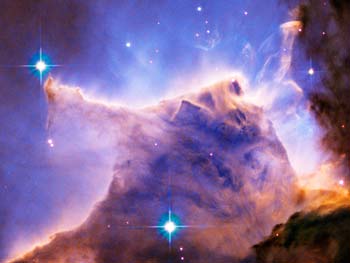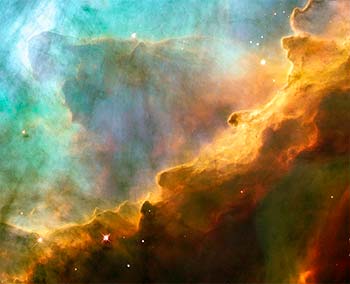 |
 |
 |
||
Nebula: A nebula is a giant cloud of dust, hydrogen gas, helium gas and plasma, which attract further matter, and eventually will become big enough to form a star. Over time, the hydrogen gas fromthe Nebula is pulled together by the gravity force and begins to spin. The nebula is on its way to become a Protostar Where do nebulae come from Many nebulae form from the gravitational collapse of gas in the interstellar medium. As the material collapses under its own weight, massive stars may form in the center. Some nebulae are formed as the result of supernova explosions. The materials thrown off from the supernova explosion are ionized by the energy and the compact object that it can produce. Other nebulae may form as planetary nebulae. This is the final stage of a low-mass star's life, like Earth's Sun. Stars with a mass up to 8-10 solar masses evolve into red giants and slowly lose their outer layers during pulsations in their atmospheres. When a star has lost a sufficient amount of material, its temperature increases and the ultraviolet radiation it emits is capable of ionizing the surrounding nebula that it has thrown off. The nebula is 97% Hydrogen and 3% Helium with trace materials. The main goal in this stage is to achieve equilibrium.
|
||||